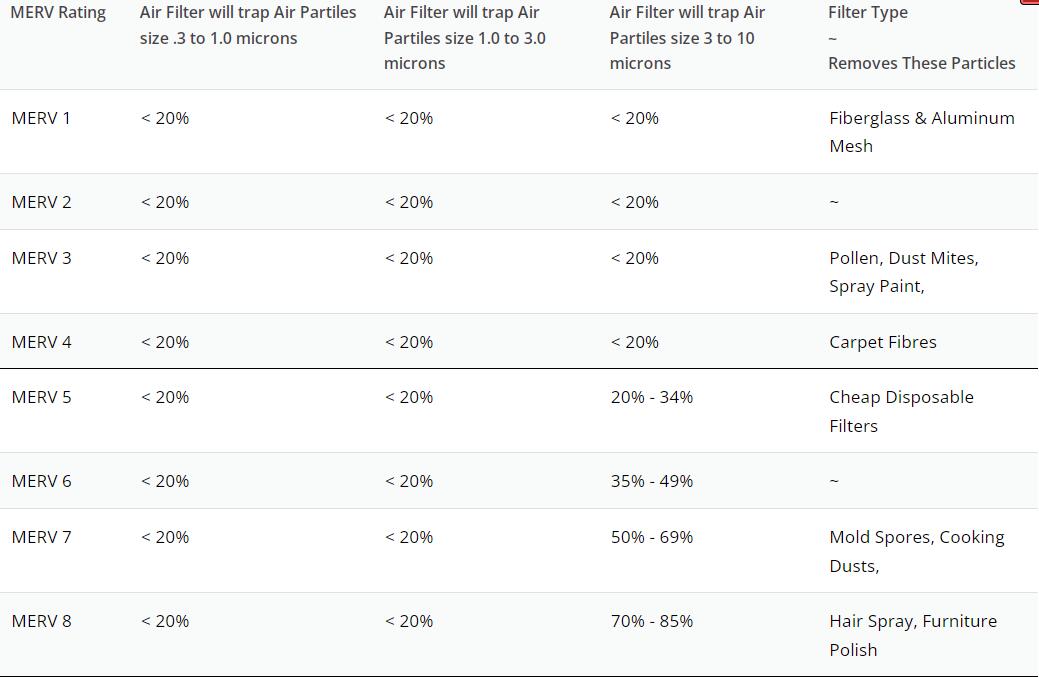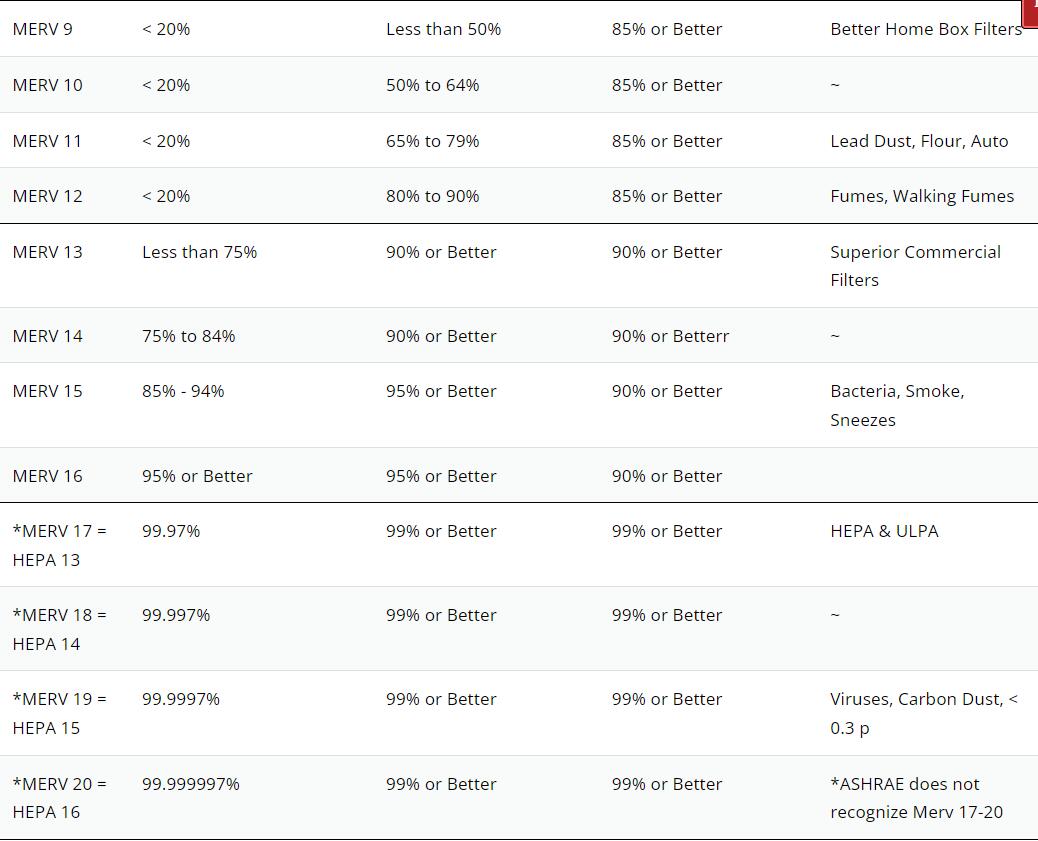Air Filters
Introduction
This article takes an in depth look at air filters.
Read further to learn more about topics such as:
What is an air filter?
Types of air filter media
Performance of air filters
Types of air filters
And much more...
Chapter 3: Efficiency of Air Filters
The performance of air filters is reported by the following ratings:
Minimum Efficiency Reporting Value (MERV)
The Minimum Efficiency Reporting Value (MERV) is a scale that evaluates the minimum efficiency of air filters in capturing particles between 0.3 µ and 10 µ. Since the efficiency of most filters goes up as the filter loads with dirt, this test determines how well the filter works from day one.
Previous tests gave the average efficiency based on the particle sizes that could be skewed and not a true representation of the filter’s performance. The MERV test provides the user with information so they have a better idea of the air quality they can expect and a more accurate evaluation of the performance between the different ratings. MERVE is used to compare the performance of air filters. The test method to determine the MERV rating was developed by the American Society of Heating, Refrigerating, and Air Conditioning Engineers (ASHRAE).
The higher the MERV rating, the more effective the air filter is at filtering smaller particles. As the rating increases, the air filter becomes more capable of capturing even smaller particles. However, those air filters have a denser filter media, which creates a higher initial static pressure and could result in a lower airflow depending on your HVAC design.
Higher static pressure can result in higher operating costs, which can be eliminated by replacing the filter more often while its static pressure is at its lowest. Along with the health and production benefits, a higher efficiency filter would also keep your Heating and A/C coils cleaner.
The table below presents the MERV rating scale:


Air filters with MERV ratings above 16 are classified as HEPA and ULPA filters.
Arrestance
Arrestance is a rating given to air filters with low MERV ratings to indicate their efficiency. It is defined by the ability of an air filter to remove synthetic dust in the air. Higher arrestance means the air filter can remove large particles, such as dust, hair, lint, and dirt more effectively.
Dust Holding Capacity
Dust holding capacity is the average weight of dust an air filter can hold before reaching a specified pressure. This test uses a manufactured synthetic dust with a known average particle size.
Both arrestance and dust holding capacity are used for air filters with MERV ratings of 1 to 4; they are documented in the ANSI/ASHRAE Standard 52.2.
Dust Spot Efficiency
Dust spot efficiency refers to the ability of air filters to remove atmospheric dust from test air. It is determined by a staining test used to calculate the efficiency based on upstream and downstream airflow rate and opacity. This measure is documented in the 2009 ANSI/ASHRAE Standard 52.1, an older version of the ANSI/ASHRAE 52.2.
Most Penetrating Particle Size
The Most Penetrating Particle Size (MPPS) is the size of the particle that can most easily pass through the air filter.






















